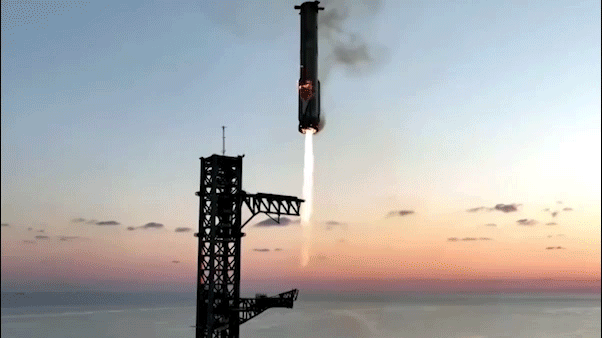NASA finalizes strategy for human presence in space
This week, NASA finalized its strategy for sustaining a human presence in space. A document emphasized the importance of maintaining the ability for extended stays in orbit after the International Space Station is retired.
"NASA's Low Earth Orbit Microgravity Strategy will guide the agency toward the next generation of continuous human presence in orbit, enable greater economic growth, and maintain international partnerships," the document stated.
The commitment comes amid questions of whether the new space stations will be ready to go. With the incoming Trump administration’s effort to cut spending through the Department of Government Efficiency, there are also fears NASA could face cuts.
INTERSTELLAR VOYAGER 1 RESUMES OPERATIONS AFTER PAUSE IN COMMUNICATIONS WITH NASA
"Just like everybody has to make hard decisions when the budget is tight, we've made some choices over the last year, in fact, to cut back programs or cancel them all together to make sure that we're focused on our highest priorities," said NASA Deputy Administrator Pam Melroy.
Commercial space company Voyager is working on one of the space stations that could replace the International Space Station when it de-orbits in 2030. The company applauded NASA’s strategy to keep humans in space.
"We need that commitment because we have our investors saying, ‘Is the United States committed?’" said Jeffrey Manber Voyager's president of international and space stations.
President Reagan first launched the effort to keep humans in space at a permanent residence. He also warned of the need for private partnerships.
"America has always been greatest when we dared to be great. We can reach for greatness," Reagan said during his 1984 State of the Union address. "The market for space transportation could surpass our capacity to develop it."
The first piece of the ISS was launched in 1998. Since then, it has hosted more than 28 people from 23 countries. For 24 years, humans have occupied the ISS continuously.
The Trump administration released a national space policy in 2020 that called for maintaining a "continuous human presence in earth orbit" and also emphasized the need to transition to commercial platforms. The Biden administration maintained that policy.
NASA ROVER CAPTURES SILHOUETTE OF A MARTIAN MOON IN STUNNING VIDEO
"Let's say we didn't have commercial stations that are ready to go. Technically, we could keep the space station going, but the idea was to fly it through 2030 and de-orbit it in 2031," NASA Administrator Bill Nelson said in June.
In recent months, there have been questions whether the policy would be maintained.
"I just want to talk about the elephant in the room for a moment, continuous human presence. What does that mean? Is it continuous heartbeat or continuous capability? While we kind of originally hoped that this would just sort of emerge from this process, we're still having conversations about that and understanding it," Melroy said at the International Astronautical Congress in October.
NASA’s finalized strategy took into account concerns from commercial and international partners over what it would mean to lose the ISS without a commercial station ready to go.
"Almost all of our industry partners agreed. Continuous presence is continuous heartbeat. And so that's where we stand," Melroy said. "I think this continuous presence, it's leadership. Today, the United States leads in human spaceflight. The only other space station that will be in orbit when ISS de-orbits, if we don't bring a commercial destination up in time, will be the Chinese space station. And we want to stay and remain the partner of choice for our industry and for our goals for NASA."
Three companies, including Voyager, are working with NASA to develop commercial space stations. Axiom signed an agreement with NASA in 2020. The agency awarded contracts to Nanoracks, now part of Voyager Space, and Blue Origin in 2021.
"We've had some challenges, to be perfectly honest with you. The budget caps that were a deal that was cut between the White House and Congress for fiscal year (2024 and 2025) have left us without as much investment. So, what we do is we co-invest with our commercial partners to do the development. I think we're still able to make it happen before the end of 2030, though, to get a commercial space station up and running so that we have a continuous heartbeat of American astronauts on orbit," Melroy said.
Voyager says it is not behind in the development process and is still planning to launch their starship space station in 2028.
"We're not asking for more money. We're going ahead. We're ready to replace the International Space Station," Manber said. "Everyone knows SpaceX, but there's hundreds of companies that have created the space economy. And if we lose permanent presence, you lose that supply chain."
Additional funds have been provided for the three companies since the initial space station contracts. A second round of funding could be crucial for some projects. NASA could also award funding for new space station proposals. One prospect is Long Beach, California’s Vast Space. The company recently unveiled concepts for its Haven modules. It plans to launch the Haven-1 as soon as next year.
"We absolutely think competition is critical. This is a development project. It's challenging. It was hard to build the space station. We're asking our commercial partners to step up and do this themselves with some help from us. We think it's really important that we carry as many options going forward to see which one really pans out when we actually get there," Melroy said.










